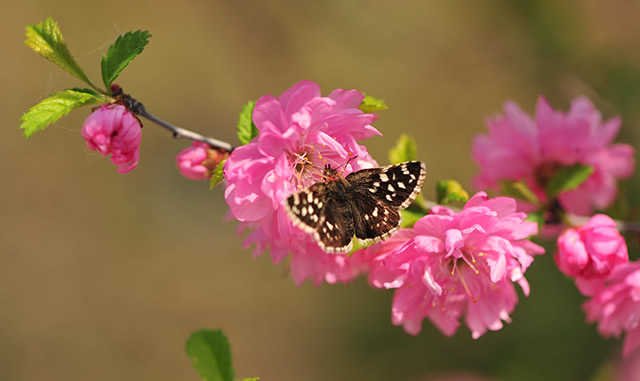How to trim the potted osmanthus breeding method and precautions for potted osmanthus
1. The breeding method and precautions of potted osmanthus flowers
1. Siric acid soil
Choose slightly sour soil in the planting method of potted osmanthus to allow osmanthus to better grow.It is usually selected to prepare the humus soil, sand soil and its rotten Fertilizer according to the ratio of 4: 3: 3, so that it will form fertile and loose soil with slightly acidicity.
2. Timely topdressing
Potted planting osmanthus needs to continue to add nutrients to replenish it, so that osmanthus can be fully nutritious and thrive.During the growth process, the thin Fertilizer is added for about two weeks. The Fertilizer mainly chooses nitrogen fertilizer, and the amount of phosphorus and Potassium fertilizer should be added to the flowering period to better flowering.
3. Temperature light
The planting pottery flowers also provide suitable temperature lighting to control the temperature of its growth environment between 15-20 C, so that osmanthus can grow normally.It is also necessary to provide it with long -term sunlight, so that it will grow strongly to bloom, and to cover it in a moderate light in strong light.
4. Pruning branches
When breeding pots, it is usually trimmed in time to keep the branches in time to keep it in good plant types for viewing.In spring, it is necessary to cut off its dense branches, weak and weak branches and old branches. After blooming in autumn, the residual branches must be cut in time to make it better.
5. Cutting reproduction
From May to June of spring and summer, potted osmanthus can be made from cutting and breeding, cutting cuttings of about 8 to 10cm from osmanthus trees from osmanthus trees to ensure that the branches are healthy and thick.Then remove its leaves, only the top 2 to 4 tender leaves at the top is retained, and it is cut into the sandy soil. After the watering and moisturizing, the branches will take root.
2. How to trim the potted osmanthus flowers
1. Pruning during the seedling period
Potted osmanthus management should be trimmed regularly during the seedling period, shortened the long and too fast to keep it flat with other branches, and cut off the excess side branches, so that the nutrients can be even more nutrients moreConcentration, the seedlings grow better.
2. Pruning during growth
Its growth period must also be trimmed.At this time, the main trimming is the long and too dense branches, cutting it off one -third, so that the entire plant can be better, even more uniform, and better ventilation inside and absorb light.In addition, cut off branches without buds together, so that it can bloom better later.
3. Flower period trimming
During flowering, it is found that branches without flowers can be cut off. This can save nutrients to a greater extent and provide nutrients to branches that are blooming, which prompts the flowering period to be longer and the fragrance is more rich.In addition, it is necessary to observe diligently and find that weak flowers and residual flowers must also be cut off, prompting nutrients to concentrate.
4. Pruning in winter
During the management period, it must be trimmed once every year before the winter, mainly because it is trimmed to open the flower branches, and only one main branch is retained in winter.Cut off the two branches and side branches under the two below.And after winter, you must also trim the branches that are aging to save nutrients as much as possible, so that you can grow better in the coming year.
3. How to fertilize potted osmanthus
1. Permanent and diligence
When applying the potted osmanthus, pay attention to the thin Fertilizer and dilute the Fertilizer, and then apply it in a small amount after diluting the water.Usually it can be applied for thin Fertilizer for about 2 weeks. Do not use thick Fertilizer to raise Fertilizer. To avoid the roots of the potted osmanthus, the roots of potted osmanthus are burned by Fertilizer, causing poor growth.
2. Fertilize timely fertilization
In the spring, the new buds of osmanthus potted plants should be applied more to apply nitrogen fertilizer to promote the rapid growth of its branches; when its strong summer and autumn festival, more Compound fertilizer or full element flower Fertilizer must be applied to make it full of nutrients to thrive; when the flowering period, it can beApplying more phosphorus and Potassium fertilizer to promote the differentiation of flower bud differentiation.
3. Leaf surface pursuit
Pay attention to the fertilization of potted osmanthus for the potted osmanthus, and pay attention to the leaf surface to pursue the leaf surface. You can choose calcium phosphate, Urea or ash solution to reduce the concentration of water.Spraying can uniformly absorb nutrients and full of vitality.
4. Watering after fat
After each fertilization, water the potana potted plants once. First of all, it can avoid the accumulation of Fertilizers in the pot soil, so that the potato potted plants can be suffered from Fertilizer; secondly, this can help the osmanthus potted planting, So that the root system absorbs and grows, and becomes strong.
5. precautions
When fertilizing, pay attention to fertilization at night to avoid absorption of high temperature weather, and apply Fertilizer once in winter to help it go through the winter.It is also necessary to pay attention to the Fertilizer of the osmanthus potted plants when the root system is exposed.


